
views
Sanding and Cleaning the Surface
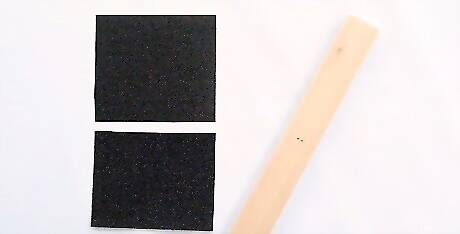
Work in a clean room with good ventilation and lighting. In order to properly apply a clear coat to wood, you want to work in an environment with as little dust as possible. Good lighting, such as natural light or bright artificial light, will enable you watch out for streaks and bubbles in your work. Good ventilation is crucial. Crack a window to let fresh air in. If you're working in a small space, you may want to prop an exhaust fan in the window. Face the fan out to pull vapors from the room and blow them outside. Never work in a damp area, as this will mess with your finish.
Sand the surface with medium grit sandpaper. Use 80 or 100-grit sandpaper to lightly go over the entire surface of your project, taking care to get into the nooks and crannies. Use medium grit sandpaper to eliminate any major scratches, notches, or blemishes in the wood. If you're working on a very large project, you may want to use an electric sander or sanding block to get the job done. You can use sanding sponges for corners and complex areas where a power sander cannot reach. Wear protective gear if you use power tools.
Follow up with fine and extra fine grit sandpaper. After smoothing out the larger blemishes with medium grit sandpaper, use fine 100-grit sandpaper to level and smooth the surface. Follow that up with an extra-fine 220-grit sandpaper to create the smoothest surface possible. The smoother the surface, the better your clear coat will adhere and look.
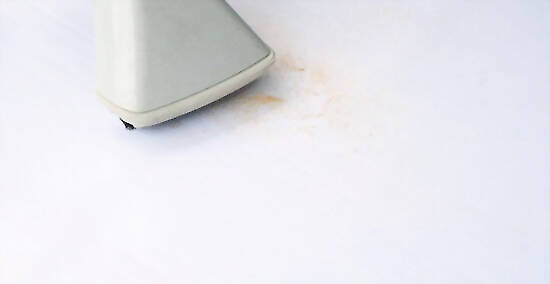
Vacuum up the sanding dust with a shop vac. Use a vacuum with a soft bristle attachment to get rid of all the dust on your project's surface. Vacuum the area around the project, as well. It's important that you rid the area of all dust generated by your sanding. Otherwise, that dust can end up trapped and visible beneath the clear coat.
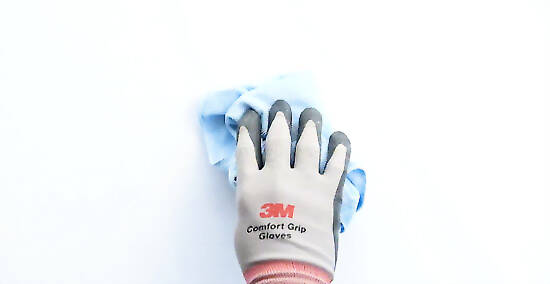
Wipe down the surface with a cloth moistened with mineral spirits. Use a lint-free cloth to ensure no traces of the cloth's material are left behind. Dampen the cloth with mineral spirits and wipe down the entire surface. Be sure to get into the nooks and crannies. Then go over the surface one final time with a dry tack cloth.
Sealing the Surface
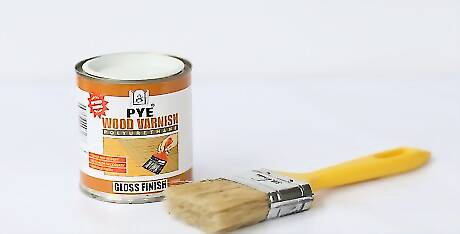
Use an oil-based polyurethane and a foam or natural bristle brush. Oil-based polyurethane in a satin sheen is an excellent all-purpose clear coat that is relatively easy to apply. Purchase this and your foam brush at a hardware or home improvement store. Foam brushes are recommended because they are inexpensive, and you can toss them out when you’re done. Natural bristle brushes are also a great choice, although they are more expensive and not disposable.

Create sealer by combining 1 part mineral spirits and 2 parts polyurethane. You can create your own homemade sealer by thinning the polyurethane with paint thinner. Stir the polyurethane well, then combine it with the mineral spirits in a glass jar or plastic bucket. Stir gently with a wooden wand to combine the ingredients. Creating a homemade sealer is the easiest and most economical choice.

Brush on 1 coat of the sealer with long, even strokes. Dip your brush into the sealer to load it with product. Starting on 1 side of your project and working systematically to the other side, brush on the sealer with long, even strokes. Watch for dripping. If you notice any drips, brush over them to smooth them out.
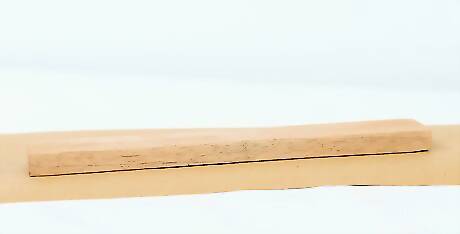
Wait for 5 minutes and examine the surface once more for dripping. Because the sealer is pretty thin, dripping can be a problem. You definitely don't want any drips to dry on the surface, since this will disturb your smooth finish. Give the coat of sealer about 5 minutes to dry, then examine the surface once more for drips. Smooth out any that you see with your brush. Leave this to cure for 12-24 hours.
Applying the First 2 Coats
Apply the first coat of straight polyurethane from the can. Dunk your brush into the full-strength polyurethane and brush it onto the surface. Start on 1 side of the project and work systematically to the other side. Use long, even strokes. Stretch out the finish as thin as possible. Always apply the finish as evenly as possible. When bubbles occur, brush back over the finish lightly to cause them to pop. You can also use a spray-on finish instead of brushing it on.
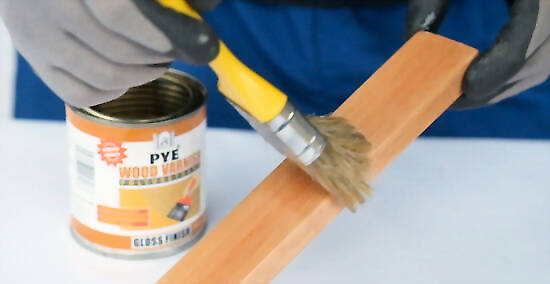
Brush on a second undiluted coat of polyurethane. Once the entire surface is wet with your first coat, go back over it with another coat of full-strength polyurethane straight from the can. Use long, even strokes. Overlap each stroke to ensure smoothness. Watch for any drips and smooth them out with your brush as they occur.
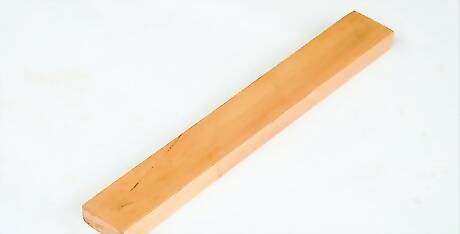
Check for drips and then let the finish dry for 24 hours. Wait 5 minutes after application and then examine the surface a final time for drips. If you find any, use your brush to smooth them out. Before moving on to your final coat, let the first 2 cure completely over a 24 hour period. Make sure the surface is fully dry to the touch before proceeding.
Applying the Final Coat
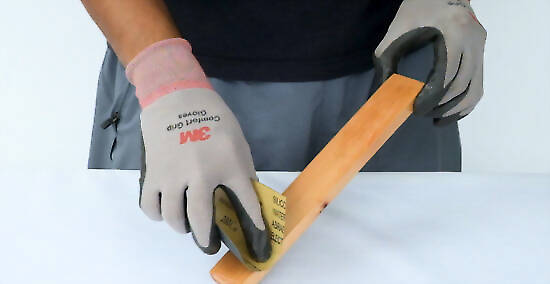
Sand the surface with 280-grit sandpaper. Rub the sandpaper over the surface of your wood until it feels smooth to the touch. Inspect the surface closely and smooth out any major bubbles, specks, and runs. You want the wood to be as smooth as possible before adding the last coat of polyurethane.
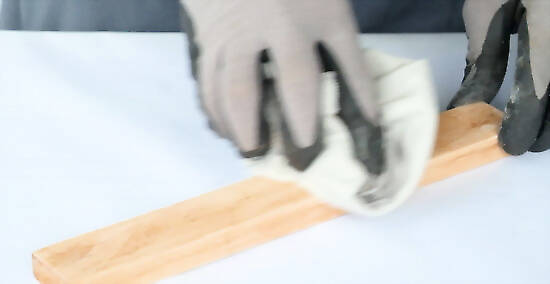
Wipe down the surface with a tack rag. A tack rag is a sticky cloth that you can purchase at home improvement stores. Use it to remove as much sanding dust as you can from the surface. The smoother the surface, the better the project will look after the final coat. If you don’t have a tack rag, you can use a moistened lint-free cloth or a vacuum cleaner.

Apply a full-strength final coat. Just as you did with the initial coats, brush the polyurethane onto the surface, working systematically from one side of the project to the other. Pop any bubbles you see by brushing back over the finish. Move in the direction of the wood grain. Always stretch the polyurethane as thin as you can. Let the surface cure for 24 hours.

















Comments
0 comment